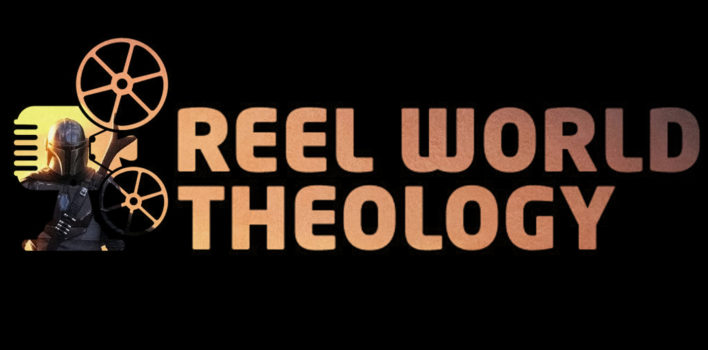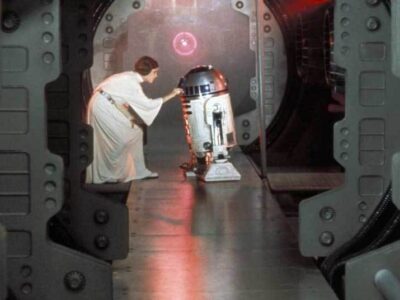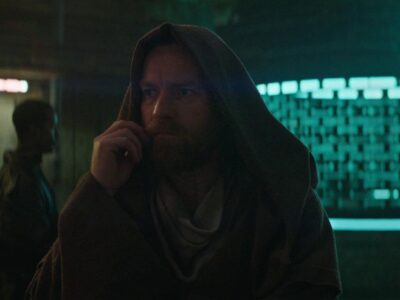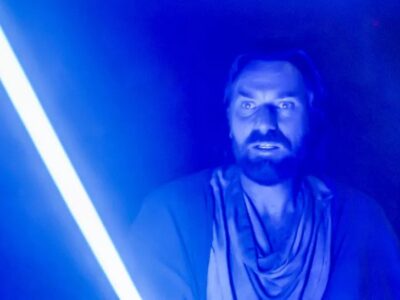The Mandalorian Chapter 1: Rebuilding a People
It took until my second viewing of The Mandalorian’s “Chapter One” for me to take a good critical look at the show. My internal eleven-year-old, long since resigned to never again having an experience like Shadows of the Empire, finally came alive again; and my internal band nerd couldn’t stop focusing on Black Panther composer Ludwig Göransson’s incredible score (particularly the middle of “You Are A Mandalorian,” which is a genius combination of classic John Williams-esque symphonic score with a driving guitar and would be just absolute chef’s kiss perfect if it were about twice as long).
So yes, The Mandalorian is good so far. Possibly even great, depending on where it goes from here (it is the first episode, after all). Pedro Pascal is deeply mysterious as the titular character; Jon Favreau’s script is really clever at best and more than serviceable at worst; Dave Filoni’s direction captures the spirit of 70’s-era Star Wars in both its shot composition and endearingly low-fi practical effects; and if you get me started on Göransson’s score again we’re going to be here for a while. It felt like the best parts of the old Expanded Universe updated for a modern Star Wars. It scratched an itch for hardscrabble underworld antics and grim-faced antiheroics in the far, far away galaxy like none of the Skywalker Saga films ever have and Solo: A Star Wars Story wishes it could’ve. In short, this is the good maclunkey.
If you’re here for a review, and you haven’t seen the show, you should stop here and come back once you’ve signed up for Disney+ because spoilers for “Chapter One” of The Mandalorian follow. I have spoken.
The Mandalorians and The Mandalorian
In the history of the Star Wars saga, Mandalorians have had a pretty rough time. While their armor adorned the most infamous bounty hunter in the franchise, Boba Fett (as well as his father Jango), the new Disney+ show is our first live-action encounter with actual members of the tribe. And when we’ve seen the people in animated or book form, Mandalorians have always been either under attack, rebuilding from war, or controlled by an occupying force.
It’s not easy being on the run, but “Mando” (which is what I’m going to call the titular character for clarity’s sake) and his tribe have made the most of it. They seem to be in exile, but they have carved out an identity for themselves. The metal Beskar has become semi-spiritual. Even the forge where Mando’s pauldron is crafted has a tabernacle-like feel to it.
The group feels a lot like the Biblical accounts of the Israelites; a proud people who have fallen on tough times. Like the Israelites, they wander the galaxy in search of a home and find significance in what scraps of their old life they can.
But this people hasn’t always been downtrodden. “You are a Mandalorian!” the ugnaught Kuiil tells Mando; “your ancestors rode the great Mythosaur!” Stories are told about who they were.
So what happened?
The Mandalorians and the Empire
Though legends and the Fetts have built the legend of the Mandalorians into semi-mythical figures, within the story the people are as real as their pain. After an ill-conceived war with the Jedi, the Mandalorians were briefly under Republic occupation–which seamlessly became Imperial occupation when Palpatine arose. The Empire took Beskar from the Mandalorians, literally stamping their own logo upon it and leaving the Mandalorians to create their armor with lesser materials. Imperial rule also led to diaspora, the tribe scattering across the galaxy. They were scattered and broken and beaten people.
This feels like the Israelites, too: a scattered and broken and beaten people. After they escaped slavery in Egypt, they wandered the wilderness like survivors of abuse. The tabernacle God commanded them to build was a place for them to connect with their God and with what they had lost; but even with that touchpoint, they were a proud people in search of a home.
And we have an opportunity to identify with this plight! We, too, are children of God, chosen before the foundation of the world to be with Him forever, but taken captive by the empire of sin and led into slavery to our own passions and twisted desires.
In our galaxy, the Israelites would be led to freedom and given a new home; and the full fruiting of their salvation would come when God put on the armor of humanity, and as an Israelite man named Jesus offered Himself up as a sacrifice for the world to save not only the Israelites, but His people around the world.
The tribes of Israel were on the ropes, but they weren’t forgotten by their God; and more importantly, they were united by the God who called them out of their bondage. And so are we.
It remains to be seen whether the Mandalorians in this show will be led to any sort of salvation, or “Mando” and his people will be left in their regrettable state. But still, after “Chapter One,” we have an opportunity to reflect on who God’s people are and how He has protected them throughout history as we await “Chapter Two.”
I have spoken.
• • •
Looking for more reviews of The Mandalorian? You can subscribe to our friends over at Home One Radio, or check back here next week for our look at “Chapter Two.”








Pingback: Review and Reflections: "The Child" (The Mandalorian, Chapter 2) - Bibliomike's Pangalactic Story-Powered Gleam Chaser
Pingback: The Mandalorian Chapter 2: Supernatural Infant | Reel World Theology
Pingback: The Mandalorian Chapter 2: Supernatural Infant | Reel World Theology
Pingback: The Mandalorian Chapter 3: Family Battle | Reel World Theology